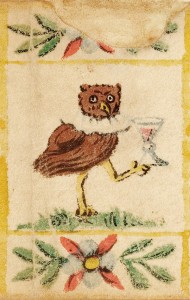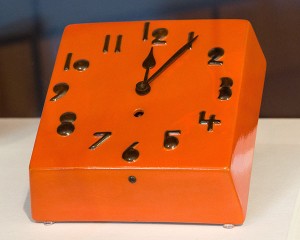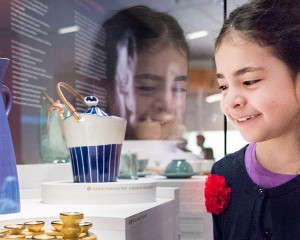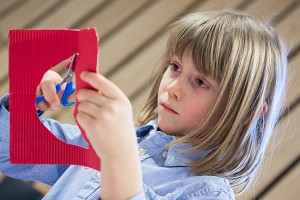Preparing for the Educational Program on the Exhibition “The Creation of the World”

Detail from a Megilla (Esther scroll), 1750-1800, Alsace
© Braginsky Collection, Zurich, photo: Ardon Bar-Hama
As a part of the educational program accompanying the exhibition “The Creation of the World: Illustrated Manuscripts from the Braginsky Collection” we’re offering the workshop “But the Snake was Craftier…” about telling and passing down stories from generation to generation. Since very few of the schoolchildren who will participate in the workshop can read Hebrew, we’ll be looking closely at the illustrations. In addition to portrayals of David with the harp and Adam and Eve in the manuscripts, our program looks at the megillot, or Esther scrolls, with their illustrations. Six scrolls have been unrolled to their full length for the exhibition.
Before we take participants in to see the exhibition, a guide will tell the story of Esther. During this conscious act of listening, each person generates pictures in his or her own mind’s eye. Afterwards, the group visits the exhibition and looks at the Esther scrolls with a magnifying glass to re-discover the scenes they’ve heard about.
To prepare for this workshop, we consulted a storytelling expert. Ten museum employees met with Prof. Dr. Kristin Wardetzky to practice storytelling under her tutelage. The first chairwoman of the Society for the Art of Storytelling, Prof. Wardetzky also founded the storytelling department at the Berlin University of the Arts’ theater education department.
Our two-day workshop with Prof. Wardetzky enthralled us all. → continue reading

Clock, designed by Greta Heimann-Loebenstein.
Gift from the heirs of Greta Heimann-Loebenstein.
© Jewish Museum Berlin, photo: Nadja Rentzsch
“I chose this clock,” says Leonie* (8 years old) pointing to the showcase. The clock is red and the numbers look a bit strange. She laughs. “A clay clock!” She’s never seen anything like it. The children study the cups, pots, and vases in the big cabinet intently. They gaze, curiously, at the shapes, colors, and designs. They’re supposed to pick the object they like best. Then they’ll learn the name of the ceramicist who made it, its purpose and appearance.

Children’s tour through the cabinet exhibition “Tonalities. Jewish Women Ceramicists from Germany after 1933”
© Jewish Museum Berlin, photo: Nadja Rentzsch
Jona (7) exclaims: “I like this bowl best. Grete made it.” “I think that design is lovely. What would you put in the bowl?” Anna (43) asks him.
Anna is guiding the children from a Berlin elementary school through the cabinet exhibition “Tonalities. Jewish Women Ceramicists from Germany after 1933.” Without hesitating, Jona answers: “Apples or bananas, or even nuts.” “Maybe even pears, or bread!” calls out Elsa (8).

Workshop at the studio in the Academy of the Jewish Museum Berlin
© Jewish Museum Berlin, photo: Nadja Rentzsch
Her favorite object is a candlestick. It’s beige and was made by the ceramicist Hanna. Anna asks the class, “Do you all know what celebration this candlestick would be used for?” Leonie’s hand flies up; she knows the answer: Hanukkah. She has just participated in a candle-dipping workshop for the Jewish Festival of Lights in December.
After the tour, the children start working on their own projects. → continue reading



